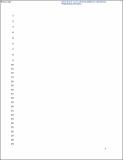Por favor, use este identificador para citar o enlazar a este item:
http://hdl.handle.net/10261/193556COMPARTIR / EXPORTAR:
 SHARE SHARE
 CORE
BASE CORE
BASE
|
|
| Visualizar otros formatos: MARC | Dublin Core | RDF | ORE | MODS | METS | DIDL | DATACITE | |

| Título: | Bottom‐up control of geographic variation in insect herbivory on wild cotton (Gossypium hirsutum) by plant defenses and climate |
Autor: | Abdala-Roberts, Luis; Quijano‐Medina, Teresa; Moreira Tomé, Xoaquín CSIC ORCID; Vázquez-González, Carla CSIC ORCID CVN; Parra-Tabla, Víctor CSIC ORCID; Berny-Mier y Terán, Jorge C.; Grandi, Luca; Glauser, Gaétan; Turlings, Ted C. J.; Benrey, Betty | Palabras clave: | Abiotic factors Herbivory Leaf pubescence Malvaceae Plant chemistry Spatial variation Wild cotton |
Fecha de publicación: | ago-2019 | Editor: | Botanical Society of America | Citación: | American Journal of Botany 106(8): 1059–1067 (2019) | Resumen: | [Premise]
The occurrence and amount of herbivory are shaped by bottom‐up forces, primarily plant traits (e.g., defenses), and by abiotic factors. Addressing these concurrent effects in a spatial context has been useful in efforts to understand the mechanisms governing variation in plant–herbivore interactions. Still, few studies have evaluated the simultaneous influence of multiple sources of bottom‐up variation on spatial variation in herbivory. [Methods] We tested to what extent chemical (phenolics, production of terpenoid glands) and physical (pubescence) defensive plant traits and climatic factors are associated with variation in herbivory by leaf‐chewing insects across populations of wild cotton (Gossypium hirsutum). [Results] We found substantial population variation in cotton leaf defenses and insect leaf herbivory. Leaf pubescence, but not gossypol gland density or phenolic content, was significantly negatively associated with herbivory by leaf‐chewing insects. In addition, there were direct effects of climate on defenses and herbivory, with leaf pubescence increasing toward drier conditions and leaf damage increasing toward wetter and cooler conditions. There was no evidence, however, of indirect effects (via plant defenses) of climate on herbivory. [Conclusions] These results suggest that spatial variation in insect herbivory on wild G. hirsutum is predominantly driven by concurrent and independent influences of population variation in leaf pubescence and climatic factors. |
Versión del editor: | http://dx.doi.org/10.1002/ajb2.1330 | URI: | http://hdl.handle.net/10261/193556 | DOI: | 10.1002/ajb2.1330 | ISSN: | 0002-9122 | E-ISSN: | 1537-2197 |
| Aparece en las colecciones: | (MBG) Artículos |
Ficheros en este ítem:
| Fichero | Descripción | Tamaño | Formato | |
|---|---|---|---|---|
| Moreira_Bottom‐up_control.pdf | Artículo principal | 702,2 kB | Adobe PDF |  Visualizar/Abrir |
CORE Recommender
SCOPUSTM
Citations
11
checked on 12-abr-2024
WEB OF SCIENCETM
Citations
9
checked on 22-feb-2024
Page view(s)
236
checked on 22-abr-2024
Download(s)
215
checked on 22-abr-2024
Google ScholarTM
Check
Altmetric
Altmetric
NOTA: Los ítems de Digital.CSIC están protegidos por copyright, con todos los derechos reservados, a menos que se indique lo contrario.
